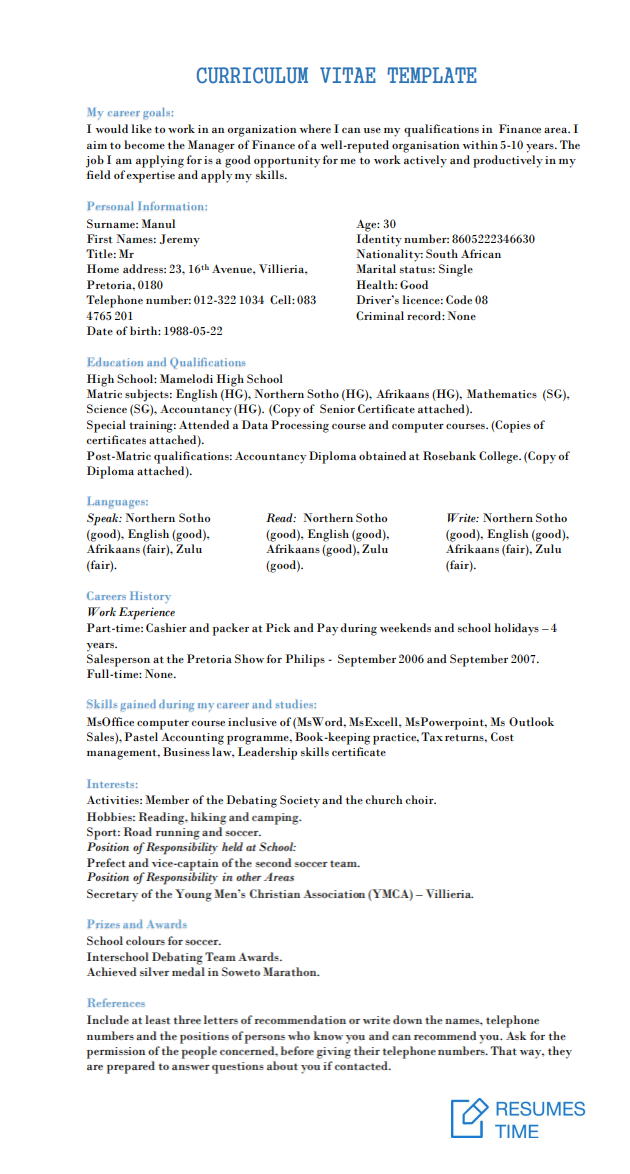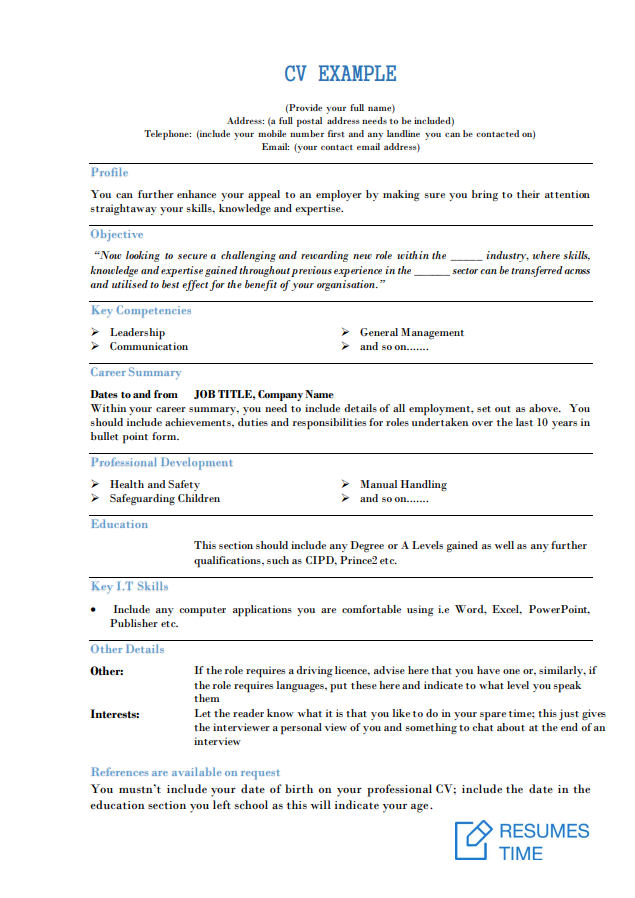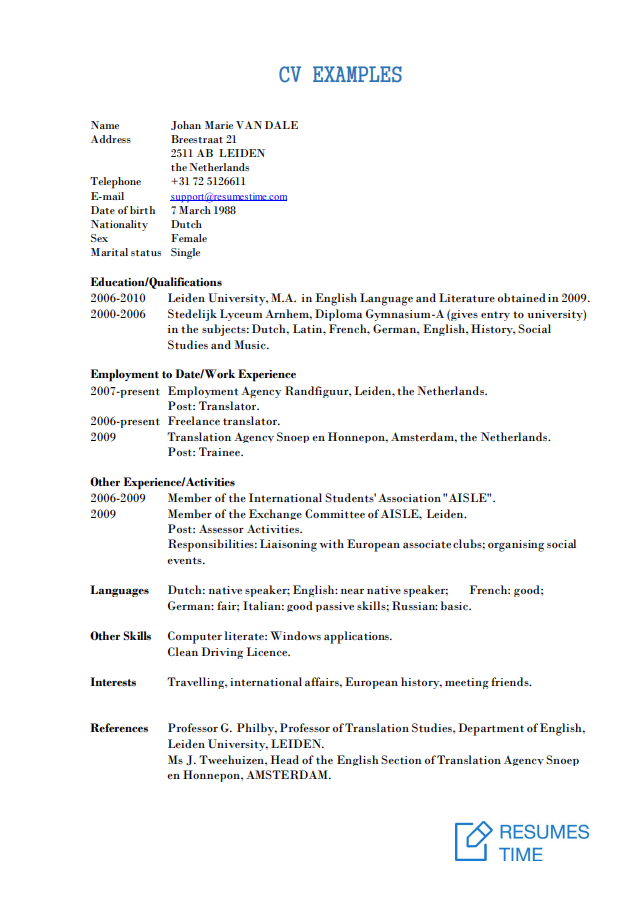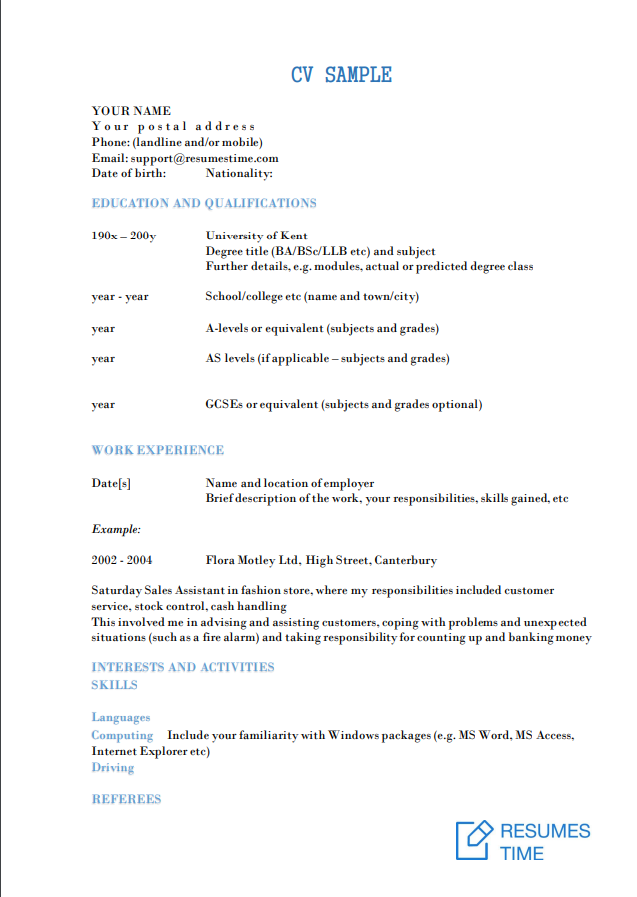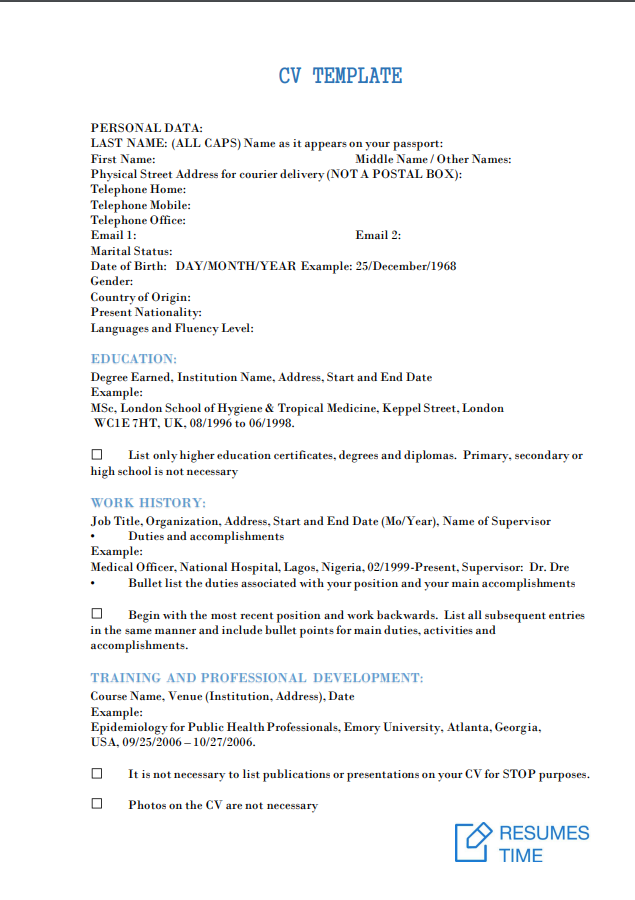CV Examples to Help You Take a Good Position
When employees or graduates are asked to write curriculum vitae, they often fall into despair and don’t know what to do. First of all, a CV is very similar to a resume and the only difference is that it should provide detailed information about you.
While a resume is usually one page long, a CV should consist of your background and may sometimes reach a couple pages long. However, there are no strict guidelines on the quantity of words you need to include.
CVs are very popular among such fields, as medicine, research and academic ones. Although more and more companies decide to replace simple resumes with CVs, as they give a clearer picture of the candidate.
Below we will give you a list of the things you need to include to your CV to follow a widely accepted structure. Stick to these elements but remember to customize your CV according to personal needs and employer’s requirements.
Related Free Resume Samples
Curriculum Vitae Structure
A common format of a CV, not depending on the field, consists of such elements, as:
- Contact details, which should include your name, address, a cell phone number and a personal email;
- Additional information (not necessary). You can indicate your date of birth, citizenship, gender, marital status and children;
- History of employment. List every position in a chronological order, providing details on your duties and dates. This section should contain not only your work history but also academic experience and training programs you have undergone;
- Education. Here you need to write about your school, college and post-graduate training programs. Include the dates, your major, certificates and other details you find relevant;
- Qualifications, like accreditations and certifications;
- Computer possession skills;
- Awards and publications;
- Interests.
If you want to have success, try to highlight your strong sides and avoid writing about the things you are not good at. Try to write about skills, which are relevant for the particular job offer.
The success of your CV also depends on its visual picture. Use only readable fonts, like Arial, Times New Roman or Calibri. The size of the font should be 10-12 pts, although you can make titles and your name a bit larger or bolder.
Another useful tip is to follow the same format throughout the text: use a single font or style, when highlighting company names or when making a list of responsibilities you had. This will show the hiring manager how organized you are and how well you can structure information.
What Else to Include to Your CV
Now, when you already have a clear picture of what a CV is, it is a right time to discuss the elements, which are compulsory to add not depending on the field.
- For US citizens, contact details are more than enough, while for other countries it may be necessary to provide details about your family;
- Your education section is as important as the experience one, so try to give enough information not only about your high school and college title but also about your degree and dissertation if any;
- The award section should contain details about your scholarships and fellowships, membership in any association and departmental awards;
- If you have completed a dissertation, write a couple sentences about your work, as well as your advisor’s name;
- In case you have research background, write about your experience in details: place, dates, colleagues and publications;
- When you have completed your academic experience section, it is time to write about your work. This should include your position and dates, as well as a list of responsibilities and accomplishments. For example, ‘I have increased the size of my department from 10 to 20 employees within a year’. The more details you give, the brighter effect your CV will have. However, avoid watery text;
- If you have any teaching experience, don’t neglect it and provide information on the place and name of the course, especially if the job offer has something to do with education;
- Write down only relevant skills, like foreign languages, computer mastership and so on. If you are applying for a managing position, there is no need to write about your cooking certificates or diving experience.
If you still have doubts how to make your CV perfect, download samples online and adjust them to your needs. This will greatly help you to stick to the structure and provide only necessary details.
After the whole work is done, don’t forget to devote enough time to editing your CV. Make sure it contains no mistakes, both grammar and lexical ones. If you have doubts that you can indicate them on your own, ask someone to proofread the CV for you.
